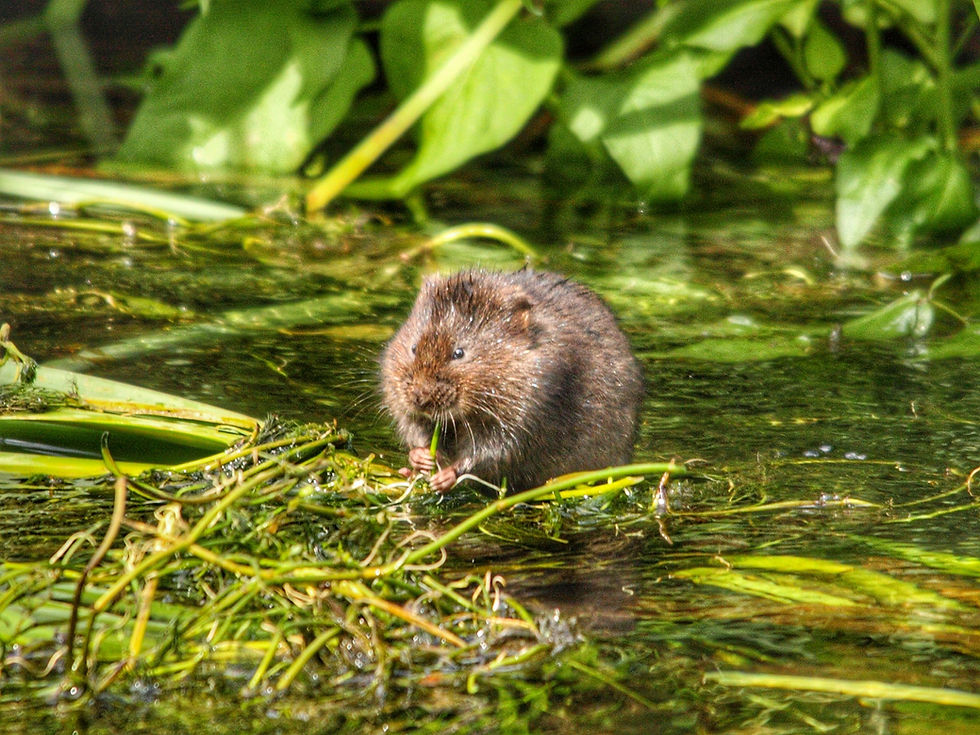RARE BLUE BUTTERFLY NOW THRIVING IN ITS FORMER HOME
- Broads Society

- Jul 7
- 3 min read
By Mark Collins
Naturalists who, for two consecutive years, relocated three dozen Silver-studded blue
butterflies from Buxton Heath to Broadland Country Park, near Horsford in Norfolk, are
thrilled that these beauties are once again thriving in their former habitats after an absence
of more than 60 years.

The Silver-studded blue, Plebejus argus, is a lovely but scarce and delicate species that has
been lost from over 80% of its former habitats in the past century, as heathland has
gradually been converted into forestry and housing. It is a nationally protected species, and
in Norfolk can now be found flying at just four locations. The project described here required
permission from Natural England, along with essential backing from the Norfolk Wildlife Trust
(NWT), which manages nearby Buxton Heath, and Butterfly Conservation, which monitors
butterfly translocations nationwide.
The reintroduction site at Broadland Country Park is situated on a gentle, sunny slope in a
small valley, with a stream flowing through woodland to Felthorpe Common and eventually
into Hors Beck, a tributary of the River Bure that flows through the Broads National Park.
This site was the source of butterflies that were, many years ago, successfully introduced to
nearby Horsford Rifle Range, where they have since become extinct. Other populations
were successfully established at NWT Buxton Heath, East Ruston Common, and Kelling
Heath. However, the original source population at what is now Broadland Country Park, was
wiped out in the 1950s when plantation forestry took over. With substantial areas of trees
since removed, Bell heather, Erica cinerea, and black ants, Lasius niger, which the
butterflies need to complete their life cycle, have returned, raising the possibility that the
Silver-studded blue could come full circle and be brought back to thrive once more in its
original home.
The Silver-studded blue has a remarkable life cycle. After mating in June, the females lay
eggs that overwinter among Bell heather to hatch into caterpillars the following spring. They
grow plump on the heather leaves and begin exuding a sweet secretion that prompts black
ants to protect them and take them down into their underground nest. Here, safe from
predators and parasites, they pupate and are finally released by the ants as adult butterflies.

A team from the Norfolk and Norwich Naturalists’ Society, led by Mark Collins, carried out a detailed survey to ensure that the essential black ants were present in high numbers, and
the heather was in good enough condition for the leaf-feeding caterpillars and the nectar-
feeding adults. It was always going to be touch-and-go whether the butterfly would survive
after such a long absence from the site. Still, after the initial reintroduction in June 2023, a
new generation of at least a dozen adults were recorded in June 2024.
Another tranche of adults was introduced in that year, and now, in 2025, a new generation of
at least fifty individuals has been seen, having spread much more widely across the
regenerating heathland. There are high hopes that the population at Broadland Country
Park, with the essential help of the resident black ants, will now continue to thrive without the
introduction of additional adults from Buxton Heath.
Dave Weaver, an award-winning community volunteer naturalist at the Country Park and a
key member of the NNNS team, has been carefully observing the situation. He will continue
to monitor for at least five years and, given the high numbers on the wing so far this year, he
believes the stage is set for a very successful future. It will increasingly attract visitors and
provide a wonderful sight for them at the Country Park.
Alan Dawson, who monitors the Silver-studded blue and other butterflies at the source site,
Buxton Heath, agrees that the butterfly is once again thriving at Broadland Country Park,
and it was clearly the right time to take some individuals back to their restored home there,
creating a fine example of nature recovery in progress. The Park was established by
Broadland District Council just a few years ago and has become a popular destination,
particularly for local residents. With careful management, this will be a flagship site for nature
recovery and biodiversity conservation in Norfolk.
During a three-year research project, the Norfolk and Norwich Naturalists’ Society has
identified more than 2,500 species of plants and animals at Broadland Country Park, and the
return of the iconic Silver-studded Blue to its former home is a moment of great pride for all
concerned. It is remarkable that the Silver-studded blue and their friendly black ants, after
living apart for more than 60 years, have so easily rekindled their wonderful and mutually
beneficial relationship.
Dr Mark Collins was Chair of the Research Committee of the `Norfolk and Norwich
Naturalists’ Society and is now Chair of the Broads Society. Both photographs are credited
to Hans Watson.




Comments